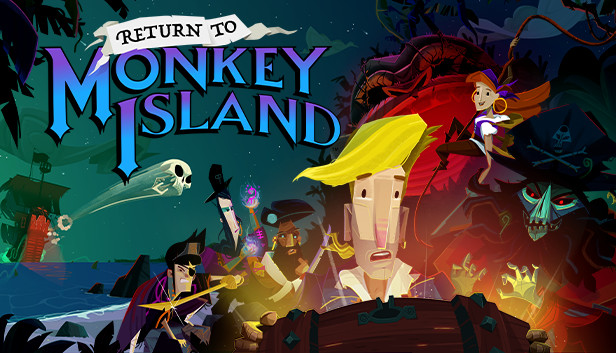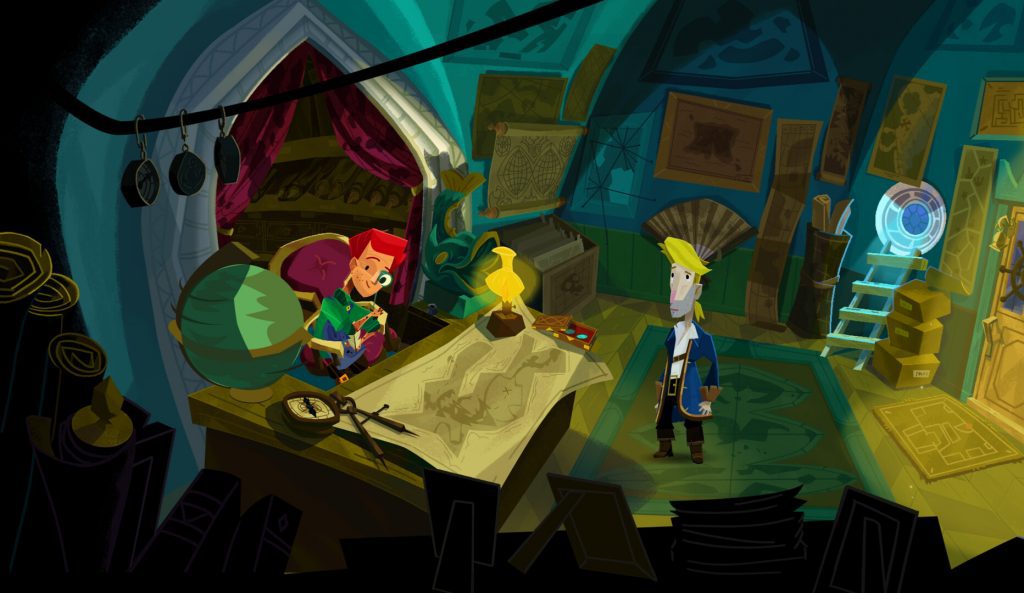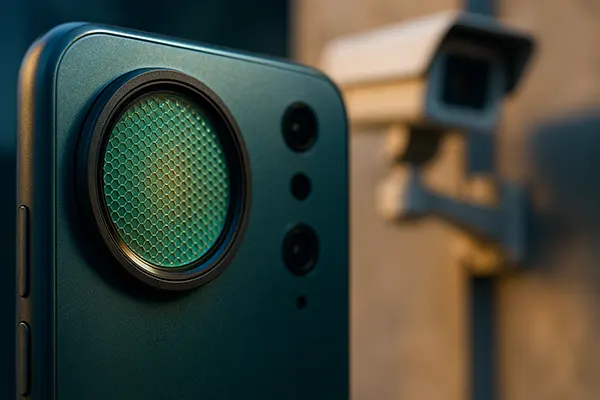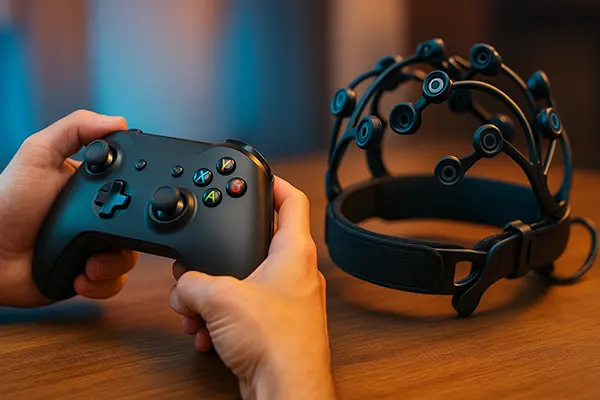
Return to Monkey Island Review
The Monkey Island game series has a history that’s not particularly extensive, but certainly fascinating. The first two instalments were directed by Ron Gilbert. The sequel ended on a cliffhanger, leaving audiences with many questions. Gilbert was unable to answer these as he had left LucasArts, the company behind the games, in 1992, and the subsequent entries in the series, developed without his involvement, explored different storylines.
Now, over 30 years later, Gilbert has managed to revisit his brainchild. In “Return to Monkey Island”, he doesn’t simply choose to extend the story of the second game, but endeavours to make the entries he had no part in creating, canonical. The outcome is indeed spectacular, but it’s already clear that at least one aspect of this new release has drawn a mixed response from the audience.
While “Return to Monkey Island” can be enjoyed by those unfamiliar with previous games, it’s a real treat for fans, packed with fan service. They’re once again brought to the Scabb Island, reuniting with familiar characters, and witnessing the changes they and the street establishments have undergone. For instance, Stan’s used ship emporium stands deserted with boarded-up windows, yet Wally’s cartographer shop remains operational.
There’s plenty for those whose memory of past games is hazy, filled with reminders. The protagonist – the ever-present Guybrush Threepwood – takes every opportunity to reminisce about his adventures upon encountering any item. You may spot a ship from the first game, or he may reference something you’ve forgotten or didn’t know about in conversations with his wife Elaine and other characters.
That said, the new addition does not deteriorate into endless fan service. Besides numerous references, it’s filled with witty jokes that may not provoke outright laughter, but will undoubtedly lighten your mood. Although some jokes can be cliché (making fun of lengthy license agreements with drawn-out lines is passé), most dialogues are enjoyable to read and listen to. For example, when Guybrush asks the Voodoo Lady about her name, which should have been revealed after all these years, even those who haven’t played the old Monkey Island games will get the joke and smile.
The central story revolves around Guybrush’s attempts to finally uncover the secret of Monkey Island. However, he lacks a crew and a ship, and his arch-enemy LeChuck is pursuing the same goal, being better prepared for the journey. Find pirates? Acquire a ship? Join LeChuck’s crew? Guybrush comes up with a solution rather quickly, and the adventure begins, featuring diverse locations, some of which haven’t been seen in the series.
The gaming community has had lengthy debates about the game’s visual style – arguing that the graphics are ‘hipster’ and that the artists should have opted for a classic approach, like in the recent Leisure Suit Larry. I admit, I also found the graphics unusual at first, but in the game, they either look great or you quickly get used to them. The locations, particularly, are well-done – vibrant, vivid, and alive. For example, you see insects flying past the camera in the forest. The characters are charming, and moments with changes in perspective, showing their faces in close-ups, add dynamism to the dialogues.

Once the game was released, discussions about the visual style took a back seat, and fans began debating the ending. Not everyone has finished the new addition yet, but it’s already clear that the finale draws varied reactions. To avoid spoilers, “Return to Monkey Island” ends just as you’d expect a game by the creator of “LeChuck’s Revenge” and “Thimbleweed Park” to. If you were expecting something different, you’d be disappointed. If you’re open to accepting the author’s vision without immediately criticising it at the sight of credits, you’ll appreciate this ending. I belong to the latter camp – I believe this conclusion suits the game and the entire saga best.
Regarding gameplay, there’s no room for argument — it’s a classic point-and-click quest reminiscent of the old Monkey Island series. We accumulate items in inventory, engage in lots of conversations, and interact with objects. Most puzzles aren’t overly complicated, which is a good thing — quests have always been known for their illogical puzzles that were impossible to solve without hints, but here, you seldom find yourself at a dead end.
If difficulties do arise, a hint book is available almost from the game’s onset. These are truly hints, not solutions — “Return to Monkey Island” is reluctant to outline necessary steps, initially providing only subtle cues. However, if these aren’t enough, you can quickly switch to the solution and save yourself the struggle.
This isn’t the only attempt to modernize the genre. The character can run around locations if you double-click a chosen spot (though climbing is slow). There’s also no need to pixel-hunt, thanks to a button that highlights interactable objects.
The primary feature, though, is the presence of difficulty levels. This makes the game accessible for everyone. In the simplified mode, puzzles require fewer steps and, in some cases, are absent altogether. The challenging mode, on the other hand, offers more puzzles — to the point where even the maps indicating the path to the objective change with each playthrough.
The result is a standard adventure game with modern conveniences. Apart from a couple of tiresome ‘quests within quests’ in the second half of the game, it’s hard to criticize the new addition. Its atmosphere takes you back years, to a time when such games were more popular and became classics over time. Perhaps the unconventional visual style and debated ending will help “Return to Monkey Island” stand out in people’s memory.
“Return to Monkey Island” is a very heartfelt quest, created by people who clearly enjoyed revisiting this universe. There are no attempts to inject something new into the genre that would reinvigorate it. But in this case, nothing of the sort was needed: fans had long wanted to see a new Monkey Island from the series’ creator — and that’s what they got. Now, they need to decide whether they’re satisfied with the ending, which might take several more years.


